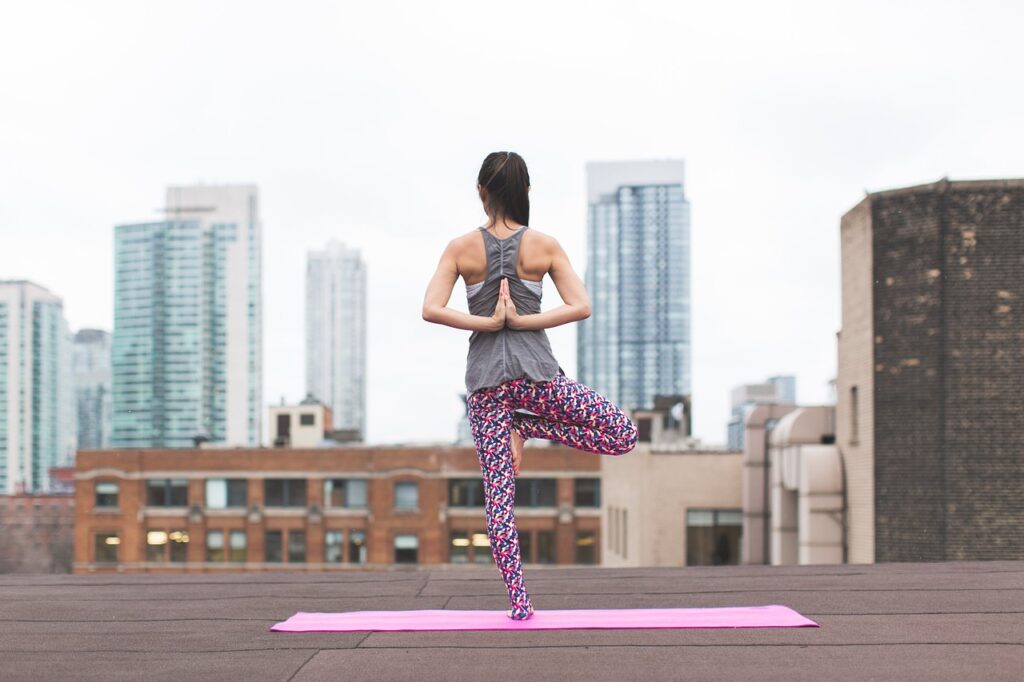
In our fast-paced world, finding moments to recharge and rejuvenate is essential for maintaining optimal productivity, focus, and overall well-being. One effective way to achieve this is through the art of power napping. If you’ve ever wondered how to take the best nap of your life, look no further. In this comprehensive guide, we’ll explore the benefits of power napping and provide you with practical tips and strategies to help you unlock the full potential of this restorative practice.
What Are the Benefits of Napping?
Napping (1
PubMed Central
Highly respected database from the National Institutes of Health
Go to source ) offers a range of benefits that can improve your overall well-being and enhance your daily performance. Here are some key advantages of incorporating naps into your routine:
- Increased Alertness and Productivity: Napping can combat fatigue and enhance alertness, helping you stay focused and perform better throughout the day. A short power nap has been shown to boost cognitive function, memory, concentration, and problem-solving skills.
- Improved Mood and Emotional Well-being: Napping can have a positive impact on your mood and emotional state. It can help reduce feelings of irritability, stress, and anxiety, promoting a more balanced and positive mindset.
- Enhanced Learning and Memory Consolidation: Napping has been linked to improved learning and memory retention. During sleep, the brain processes and consolidates information, making it easier to recall later. Naps can aid in memory consolidation and enhance your ability to retain new information.
- Stress Reduction: Taking a nap can be a valuable tool for stress management. It provides an opportunity to relax, unwind, and rejuvenate both the mind and body. Napping can help reduce the physiological and psychological effects of stress, promoting a sense of calm and well-being.
- Boosted Creativity and Problem-Solving: Napping can stimulate creative thinking and problem-solving abilities. It allows the brain to make new connections and associations, leading to fresh insights and innovative ideas.
- Physical Restoration and Energy Replenishment: Naps provide an opportunity for the body to rest and recover, allowing muscles to relax and energy levels to replenish. This can be particularly beneficial for individuals who may have had inadequate sleep the previous night or engage in physically demanding activities.
- Cardiovascular Health: Research suggests that regular napping may have cardiovascular benefits. Short naps have been associated with reduced blood pressure and a lower risk of heart-related issues, contributing to better heart health.
- Overall Well-being and Performance: Incorporating naps into your routine can contribute to an improved sense of well-being, increased productivity, and overall performance in various aspects of life, including work, academics, and personal endeavors.
How Long Should My Nap Be?
The ideal nap duration depends on several factors, including your individual needs, schedule, and desired outcome. Here are some general guidelines to help you determine the length of your nap:
- Power Nap (10-20 minutes): A short power nap is ideal for boosting alertness and productivity without entering deep sleep. It provides a quick recharge, helps combat fatigue, and minimizes the risk of grogginess upon waking. This type of nap is particularly beneficial during the midday slump or when you need a quick energy boost.
- Full-Cycle Nap (60-90 minutes): If you have more time available and aim to experience a complete sleep cycle, a longer nap of 60-90 minutes can be beneficial. This duration allows you to go through all sleep stages, including deep and REM sleep. It can enhance creativity, memory consolidation, and overall cognitive function. However, keep in mind that waking up from a full-cycle nap may result in temporary grogginess due to sleep inertia.
- Tailored Nap Duration: Your personal preferences and individual sleep needs play a vital role in determining the ideal nap duration for you. Some individuals may find that a 30-minute nap strikes the right balance, while others may prefer a shorter or longer duration. It’s important to experiment and pay attention to how different nap lengths affect your energy levels, alertness, and post-nap well-being.
Additionally, consider your schedule and the timing of your nap. If you plan to nap close to bedtime, it’s advisable to opt for a shorter duration to avoid disrupting your nighttime sleep.
How Do I Nap?
To make the most out of your nap and ensure a restful experience, here are some tips on how to nap effectively:
- Find a Comfortable Environment: Seek out a quiet, dimly lit, and comfortable space where you can relax without distractions. Consider using earplugs, an eye mask, or white noise machines to create a soothing environment.
- Set an Alarm: To avoid oversleeping and potential grogginess, set an alarm to wake you up at the desired nap duration. This will help ensure that you reap the benefits of a nap without disrupting your daily schedule.
- Relax Your Mind and Body: Engage in relaxation techniques to prepare your mind and body for rest. Deep breathing exercises, progressive muscle relaxation, or listening to calming music can help promote relaxation and ease into a nap-ready state.
- Choose the Right Position: Find a comfortable position that allows you to relax and unwind. Whether it’s lying down on a bed, reclining in a chair, or finding a cozy spot on a couch or hammock, select a position that supports your body and helps you feel at ease.
- Time Your Nap Wisely: Consider your personal energy levels and schedule when deciding the optimal time for your nap. Aim for a time when you typically experience a dip in energy or a natural lull, such as mid-afternoon. Avoid taking naps too close to your regular bedtime to prevent sleep disruptions at night.
- Experiment with Nap Duration: Test different nap durations to determine what works best for you. Start with shorter power naps of around 10-20 minutes and gradually adjust the duration based on how you feel upon waking. Remember that shorter naps are less likely to cause grogginess, while longer naps may provide more profound restorative effects.
- Wake Up Gently: When your alarm goes off, give yourself a few moments to awaken gradually. Stretch, move your body, and take some deep breaths before getting up. This can help minimize any residual drowsiness and allow you to transition back into your daily activities smoothly.
- Avoid Napping as a Substitute for Sufficient Nighttime Sleep: While naps can be beneficial, they should not replace regular, quality nighttime sleep. Aim to establish a consistent sleep schedule and prioritize getting enough sleep during the night.
How Do I Wake up?
Waking up can sometimes be a groggy and challenging experience, especially after a nap. To help you wake up feeling refreshed and energized, consider the following tips:
- Set an Alarm: Use an alarm clock, phone alarm, or a specialized nap app to wake you up at the desired time. Ensure that the alarm sound is pleasant and not jarring, as a gentle wake-up can make the transition smoother.
- Allow for a Transition Period: Give yourself a few minutes to gradually awaken before jumping into your activities. Use this time to stretch, yawn, and take a few deep breaths. This can help signal to your body that it’s time to wake up and shift from a sleep state to an awake state.
- Expose Yourself to Natural Light: Open the curtains or go outside to expose yourself to natural light. Sunlight helps regulate your internal body clock and promotes alertness. It can also help suppress the sleep hormone melatonin, making it easier to wake up.
- Engage in Physical Movement: Incorporate physical activity into your wake-up routine. Do some light stretching, take a short walk, or engage in a few minutes of gentle exercise. Physical movement increases blood flow and stimulates your body, helping you shake off any residual drowsiness.
- Hydrate: Drink a glass of water upon waking up to rehydrate your body. Dehydration can contribute to feelings of lethargy, so replenishing your fluid levels can help you feel more alert.
- Avoid Snoozing: While hitting the snooze button may be tempting, it can disrupt your sleep-wake cycle and lead to grogginess. Resist the urge to snooze and instead, get up promptly when your alarm goes off.
- Establish a Morning Routine: Develop a consistent morning routine that includes activities you enjoy. Engaging in activities you find pleasurable can make waking up more enticing and help you start your day on a positive note.
- Consider Aromatherapy: Certain scents, such as citrus or peppermint, are known to have an invigorating effect. Use essential oils or scented products to add a refreshing aroma to your waking environment.
Who Should Avoid Naps?
While napping can be beneficial for many people, there are certain situations or individuals who may need to avoid or limit their napping. Here are some cases in which napping may not be suitable:
- Insomnia or Sleep Disorders: Individuals who struggle with insomnia or other sleep disorders may find that napping disrupts their nighttime sleep. Napping can further interfere with their ability to fall asleep or maintain sleep consistency. In such cases, it’s advisable to consult a healthcare professional for guidance on sleep management strategies.
- Shift Workers: People who work irregular or rotating shifts may find it challenging to establish a consistent sleep schedule. Napping during the day can disrupt their circadian rhythm and make it difficult to adjust to their work schedule. Shift workers should consult with sleep experts or occupational health professionals to develop appropriate sleep strategies.
- Late-Night Napping: Napping too close to your regular bedtime can make it harder to fall asleep at night. If you have difficulty falling asleep or maintaining a regular sleep schedule, it’s best to avoid napping in the late afternoon or evening to preserve the quality of your nighttime sleep.
- Children with Established Sleep Patterns: Children who have established and consistent sleep patterns may not require regular naps, especially as they grow older. Napping too close to their bedtime can interfere with their ability to fall asleep at night. Additionally, children with certain medical conditions may need specific guidance from healthcare professionals regarding their sleep and napping routines.
- Individuals with Certain Health Conditions: Some medical conditions may be affected by napping or require special considerations. For example, individuals with certain respiratory disorders, such as sleep apnea, or certain neurological conditions may need to follow specific sleep guidelines provided by their healthcare professionals.
The Bottom Line
Napping can be a beneficial practice for many individuals, offering increased alertness, improved mood, and enhanced cognitive function. However, it is important to approach napping mindfully, considering factors such as individual sleep needs, timing, and potential contraindications. By finding the right balance and listening to your body’s signals, you can incorporate napping as a tool to recharge and boost your overall well-being.




